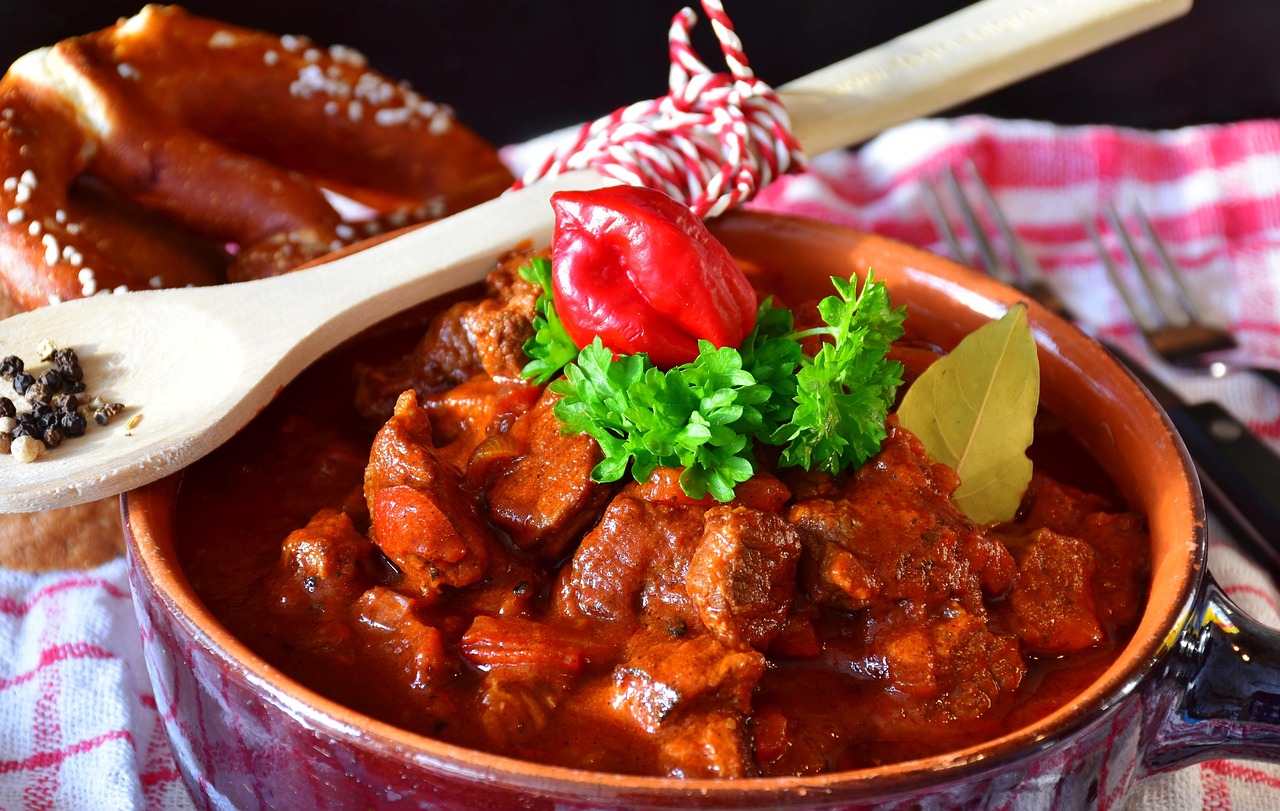
Hungary is not only famous for its stunning architecture, thermal baths, and rich history but also for its mouthwatering cuisine. Hungarian food is hearty, full of bold flavors, and deeply rooted in tradition. From iconic stews and soups to street-food favorites and sweet delights, Hungarian dishes offer travelers a true taste of the country’s culture.
If you’re planning a trip to Budapest or exploring beyond, tasting these traditional dishes is an absolute must. In this guide, I’ll walk you through the best dishes in Hungary, what makes them special, and why they’ve stood the test of time.
For each dish, I am including many interesting things – apart from what it includes – so that you have your list prepared for your trip to Hungary.
I first tasted many of these dishes in my country, Romania. The Chimney cake is very popular here (and one of my family’s favourite) and many people prepare goulas at home!
1. Goulash (Gulyás) – The National Dish of Hungary

Photo via Pixabay
No culinary journey through Hungary is complete without trying goulash. This iconic dish is often considered the country’s national treasure – in fact, on this blog, you can see a detailed goulash recipe shared by a local.
What it includes:
Traditional goulash is a hearty soup (or sometimes a stew, depending on the region) made with tender beef, onions, carrots, potatoes, and the key ingredient: Hungarian paprika. The seasoning gives goulash its deep red color and smoky flavor.
Why it’s special:
Goulash dates back to the 9th century when Hungarian herdsmen cooked meat over open fires in large cauldrons. It later became a symbol of national pride in the 19th century during the Hungarian reform era.
Interesting fact:
Today, goulash has earned a place on international menus, but the authentic Hungarian version is still the gold standard. Visitors will notice many variations – some thicker, some soupier – but all delicious.
Tip: Don’t miss trying goulash from a street-side food stall in Budapest – it’s the perfect way to warm up on a chilly day.
2. Lángos – Hungary’s Beloved Street Food
 The Lángos I had in Budapest
The Lángos I had in Budapest
If there’s one dish that screams comfort food in Hungary, it’s lángos. This deep-fried flatbread is crisp on the outside, fluffy inside, and endlessly customizable. You may laugh, but for our first-ever lunch in Budapest, we chose langos!
What it includes:
Lángos starts with a dough made from flour, yeast, salt, and water (sometimes with milk or potatoes for extra fluffiness). It’s fried until golden, then topped with sour cream, grated cheese, or garlic butter.
Why it’s special:
Lángos is one of the most popular street foods in Hungary. You’ll find locals grabbing it at markets, fairs, and even after a night out.
Interesting fact:
The beauty of lángos lies in its versatility. You can find toppings ranging from traditional (sour cream and cheese) to creative modern spins – like pizza-style, ham and mushroom, or even sweet options with Nutella.
Tip: For the full experience, try lángos at the Great Market Hall in Budapest, where vendors pile them high with cheese and sour cream.
As a side note, if you will be in Bucharest for Christmas, you will definitely find Langos stalls at our Christmas markets (we have several) because it is a very popular dish here too.
3. Kürtőskalács (Chimney Cake) – The Sweet Star of Festivals
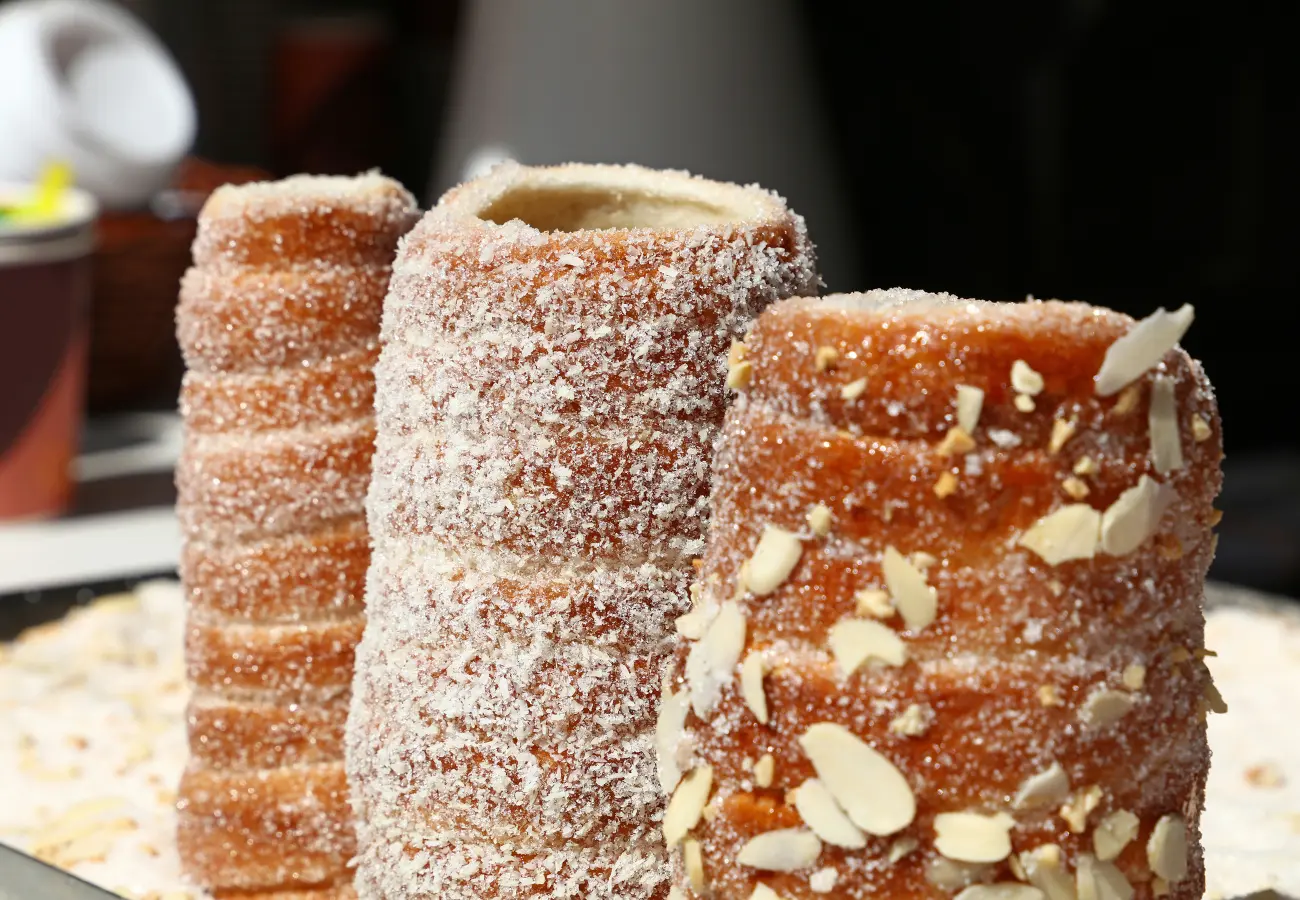 Kürtőskalács (Chimney Cake)
Kürtőskalács (Chimney Cake)
ID 116883624 ©Anton Eine | Dreamstime.com
If you stroll through a Hungarian Christmas market, the sweet aroma of kürtőskalács will almost certainly draw you in. Known in English as chimney cake, this dessert is as delicious as it is beautiful.
My favourite is the one with sugar and nuts.
What it includes:
Sweet yeast dough is wrapped around a wooden spit, brushed with butter, and baked over an open flame until golden. The outside is coated in sugar, which caramelizes to form a crispy shell.
Why it’s special:
Kürtőskalács is one of the oldest Hungarian pastries, with roots in Transylvania. Traditionally prepared at weddings and celebrations, it’s now a staple at fairs and street markets.
Interesting fact:
The treat gets its name from its hollow, chimney-like shape. Today, variations abound: you can find it dusted with cinnamon, cocoa, vanilla, or even filled with ice cream for a modern twist.
Tip: Try it fresh off the spit – warm, soft inside, and crunchy outside. Budapest’s Christmas Market at Vörösmarty Square is one of the best places for chimney cake.
4. Hortobágyi Palacsinta – Savory Pancakes with a Twist
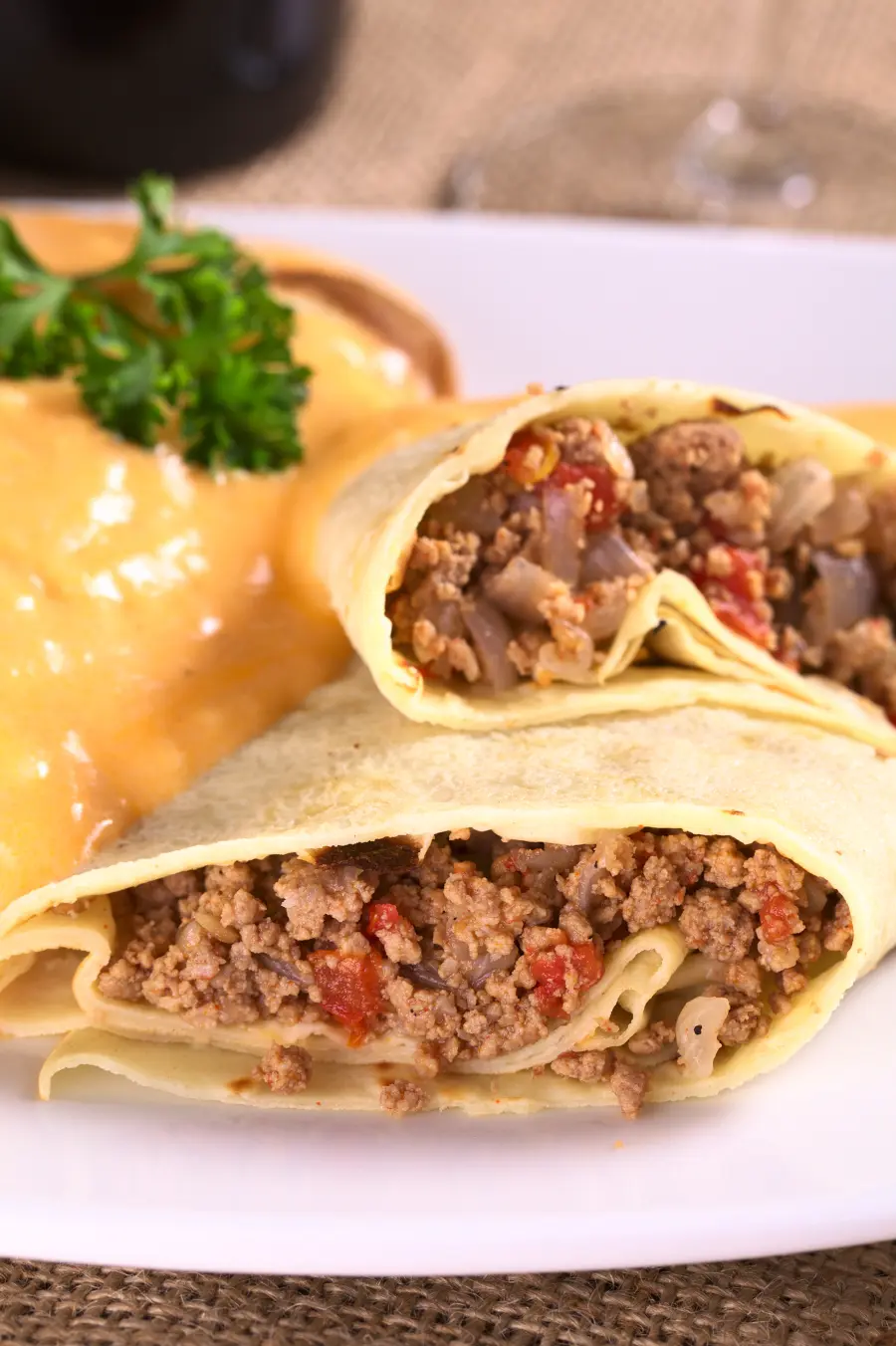
ID 52642402 ©Ildipapp | Dreamstime.com
Hungary is known for its crepes, but not all of them are sweet. Enter Hortobágyi palacsinta, a savory dish that combines tender crepes with rich fillings.
What it includes:
Thin pancakes stuffed with minced meat (often veal, chicken, or pork), then baked in a creamy paprika sauce.
Why it’s special:
Despite its name, this dish doesn’t actually come from the Hortobágy region. It was created for the 1958 Brussels World Fair, where it represented Hungarian innovation in cuisine.
Interesting fact:
It’s one of the few Hungarian dishes created in the modern era that became an instant classic. Today, it’s served in both traditional restaurants and family kitchens across the country.
5. Halászlé (Fisherman’s Soup) – Fiery and Flavorful
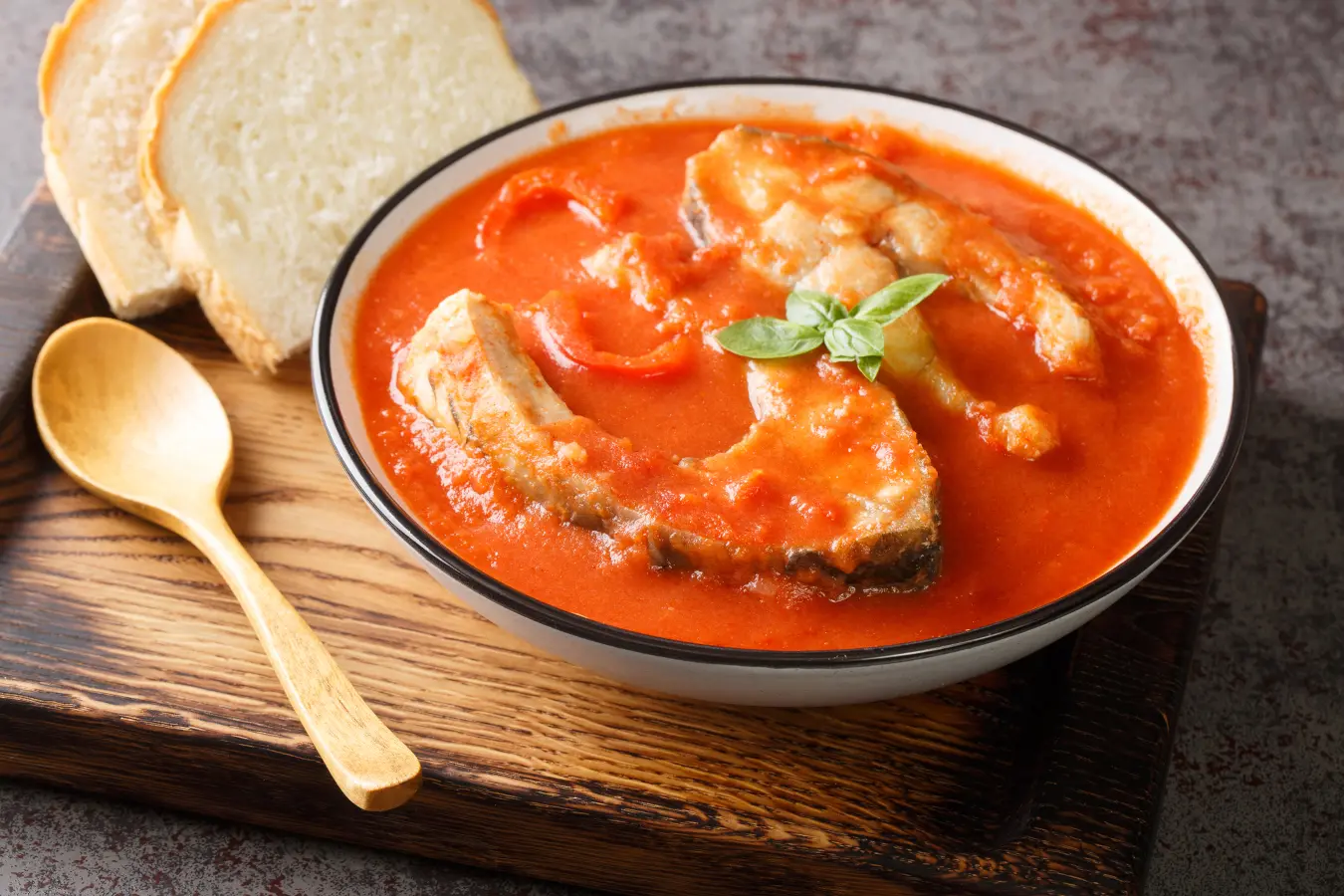
ID 253653501 ©Sergii Koval | Dreamstime.com
Hungary is a landlocked country, but its rivers inspire some incredible dishes. Halászlé, or fisherman’s soup, is a prime example.
What it includes:
Made with freshwater fish (usually carp), onions, tomatoes, and generous amounts of paprika, this spicy soup has a rich red color and bold taste.
Why it’s special:
Halászlé is traditionally cooked in a cauldron over an open fire, especially along the Danube and Tisza rivers.
Interesting fact:
The dish varies by region: in Szeged, it’s made with mixed fish and is spicier, while in Baja, it’s typically served with pasta. In 2013, UNESCO recognized Baja’s fish soup festival as an example of intangible cultural heritage.
6. Pörkölt – The Cousin of Goulash
 Pörkölt with egg noodles
Pörkölt with egg noodles
ID 260105854 ©Sergii Koval | Dreamstime.com
While goulash often steals the spotlight, pörkölt is just as beloved. And this dish was a nice surprise for me.
What it includes:
A thick stew made with meat (pork, beef, or lamb), onions, paprika, and sometimes tomatoes and peppers.
Why it’s special:
Pörkölt is often served with nokedli (small dumplings similar to German spätzle), making it a filling and comforting meal.
Interesting fact:
Unlike goulash, which has spread worldwide, pörkölt remains more of a local specialty – meaning Hungary is the best place to try it.
7. Töltött Káposzta (Stuffed Cabbage) – A Holiday Favorite
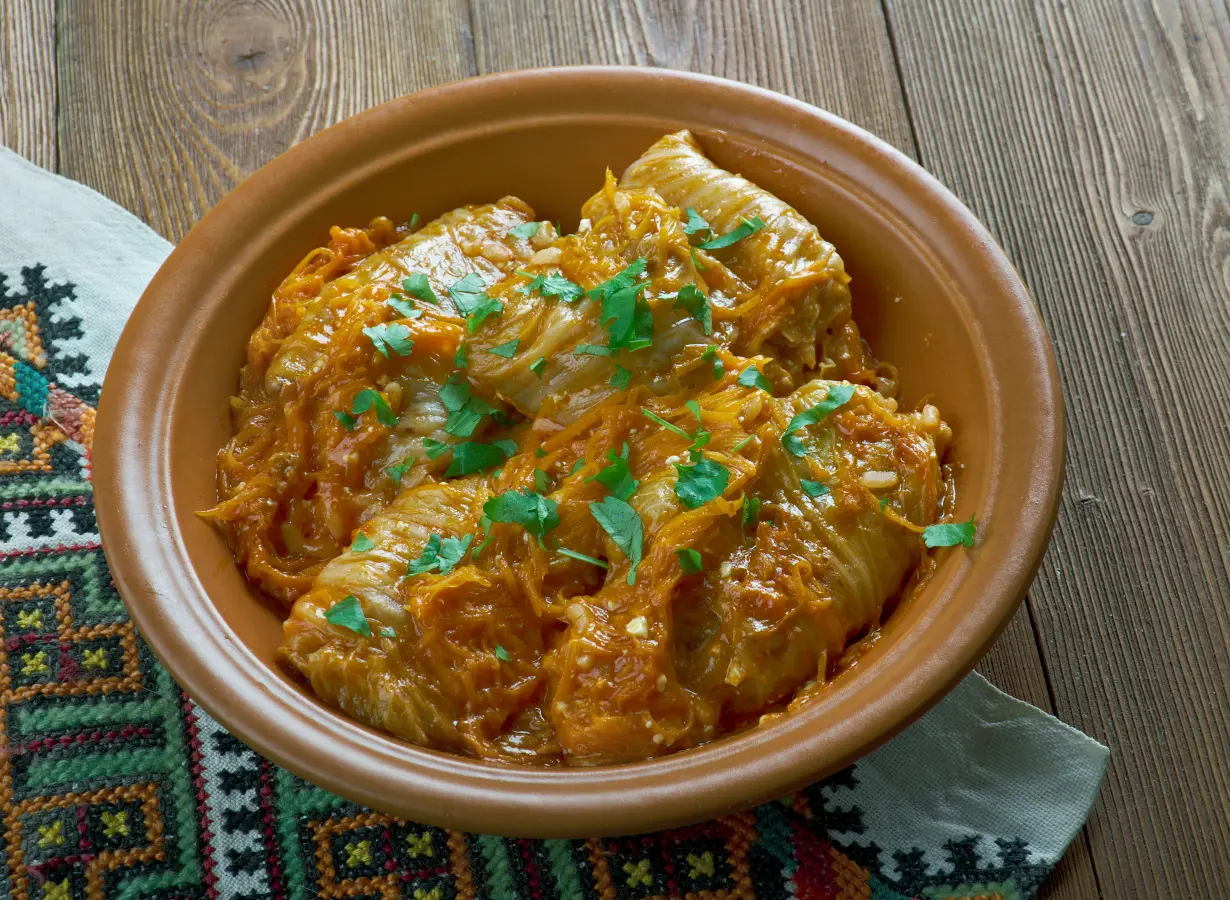
ID 78278373 ©Alexander Mychko | Dreamstime.com
Stuffed cabbage is a dish beloved across Central and Eastern Europe (we have it in Romania too, but a bit different), but Hungary has its own unique version.
What it includes:
Cabbage leaves filled with minced pork, rice, onions, and spices, all simmered in a paprika-infused tomato sauce.
Why it’s special:
This dish is especially popular at Christmas and Easter, often served with sour cream and fresh bread.
Interesting fact:
Hungarian stuffed cabbage is typically smaller than versions from neighboring countries, but it’s packed with flavor.
8. Dobos Torte – The King of Hungarian Cakes
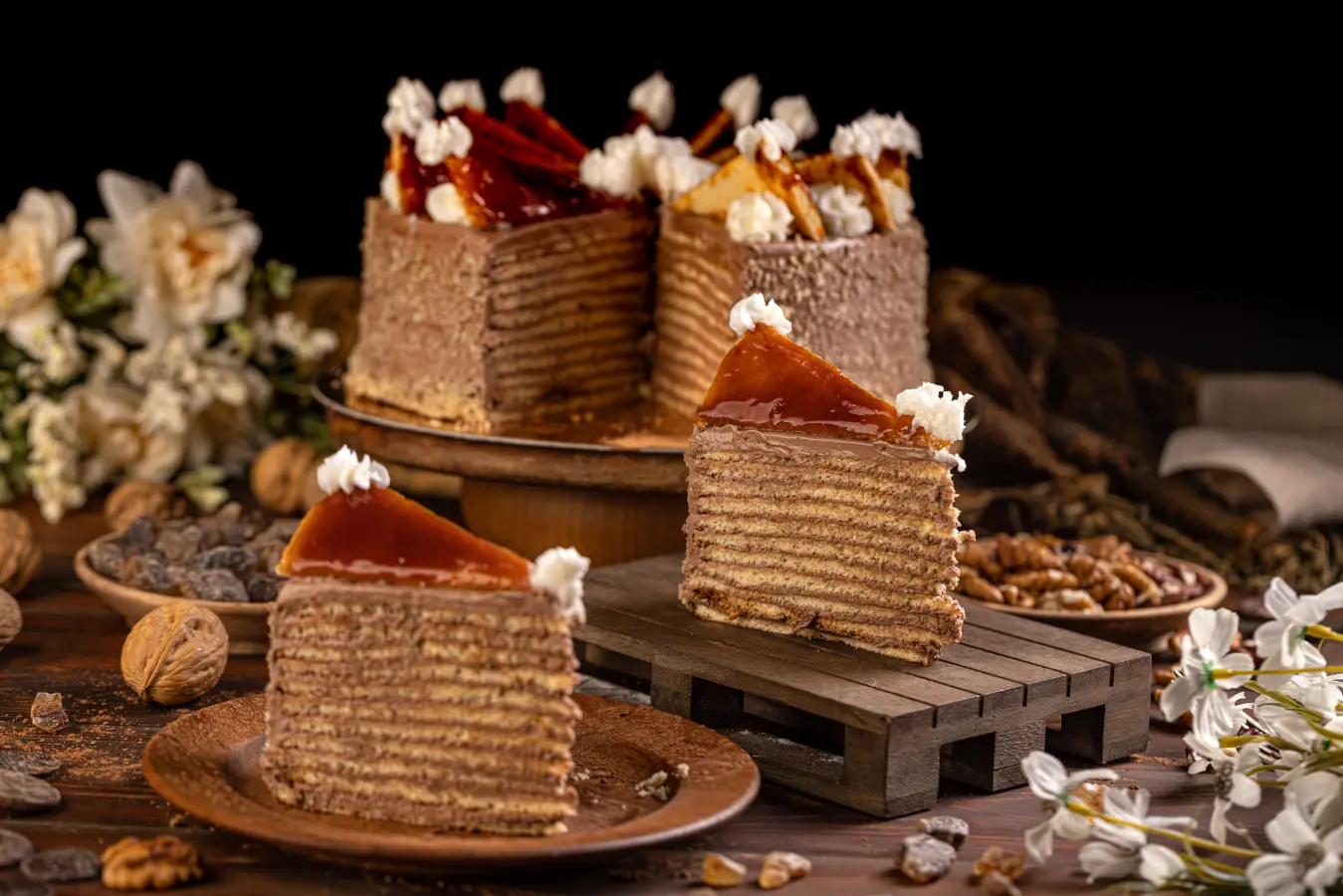
ID 213310395 ©Grafvision | Dreamstime.com
For dessert lovers, Hungary offers one of Europe’s most famous cakes: the Dobos Torte. It is YUMMY! – and so appreciated by people that you can find it in other countries too (Romania again :)) I actually made one in one year, with my mom)
What it includes:
Layers of sponge cake and chocolate buttercream, topped with a caramel glaze.
Why it’s special:
Created in 1884 by confectioner József Dobos, the cake was designed to last longer than other pastries of the time, thanks to its caramel topping sealing in freshness.
Interesting fact:
The Dobos Torte was presented at the National General Exhibition of Budapest and soon became a hit across Europe, enjoyed by royalty and aristocracy alike.
9. Somlói Galuska – Hungary’s Trifle Dessert
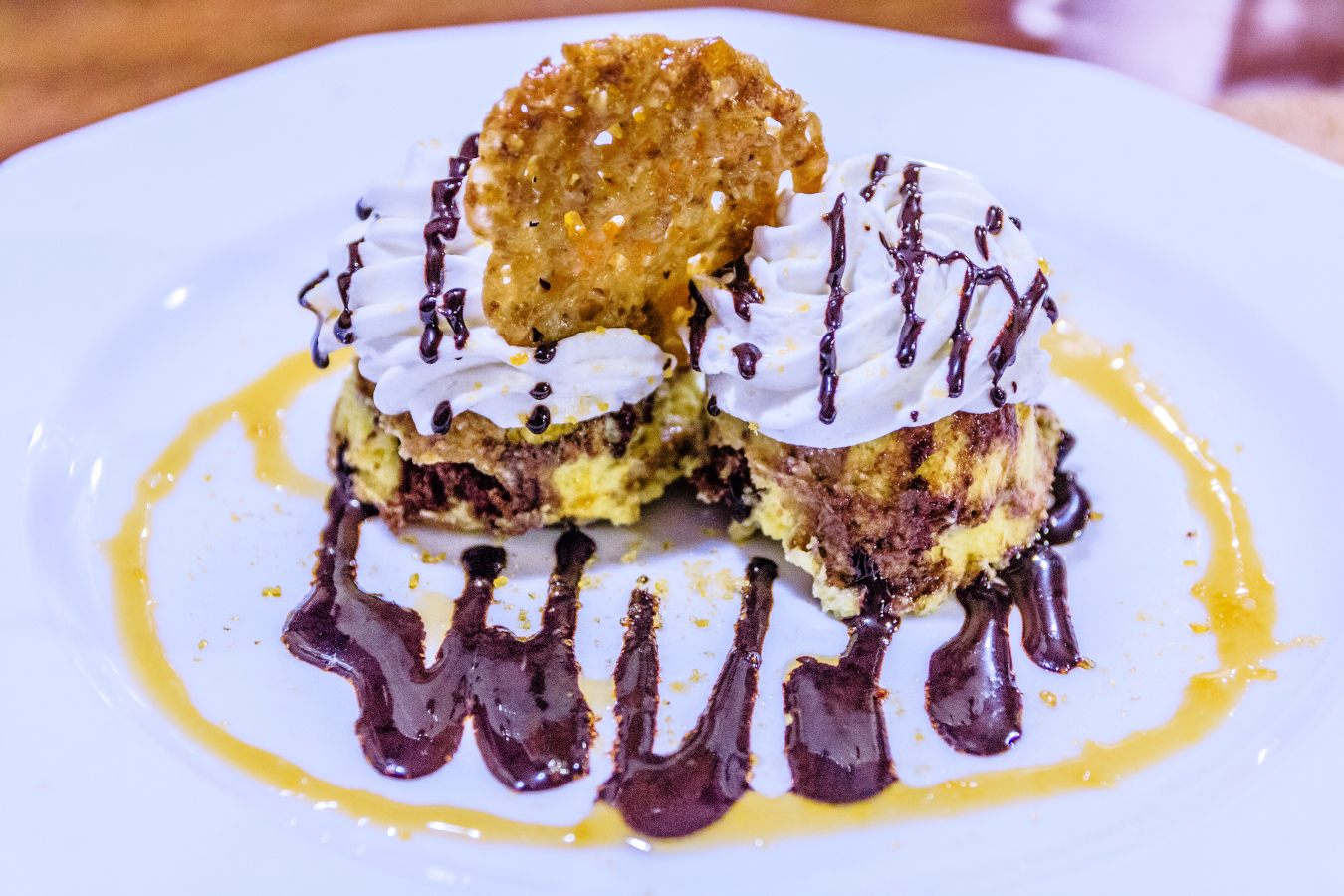
ID 107090368 ©Izabela 23 | Dreamstime.com
A relative newcomer compared to some of Hungary’s older recipes, Somlói galuska is a decadent dessert. I know: so many sweets to try!
What it includes:
Sponge cake layers flavored with walnuts, rum, and raisins, topped with chocolate sauce and whipped cream.
Why it’s special:
Created in the 1950s by Károly Gollerits, this dessert quickly became a national favorite.
Interesting fact:
Somlói galuska won first prize at the 1958 Brussels World Fair, the same event where Hortobágyi palacsinta debuted.
10. Pogácsa – The Perfect Snack with Wine or Beer
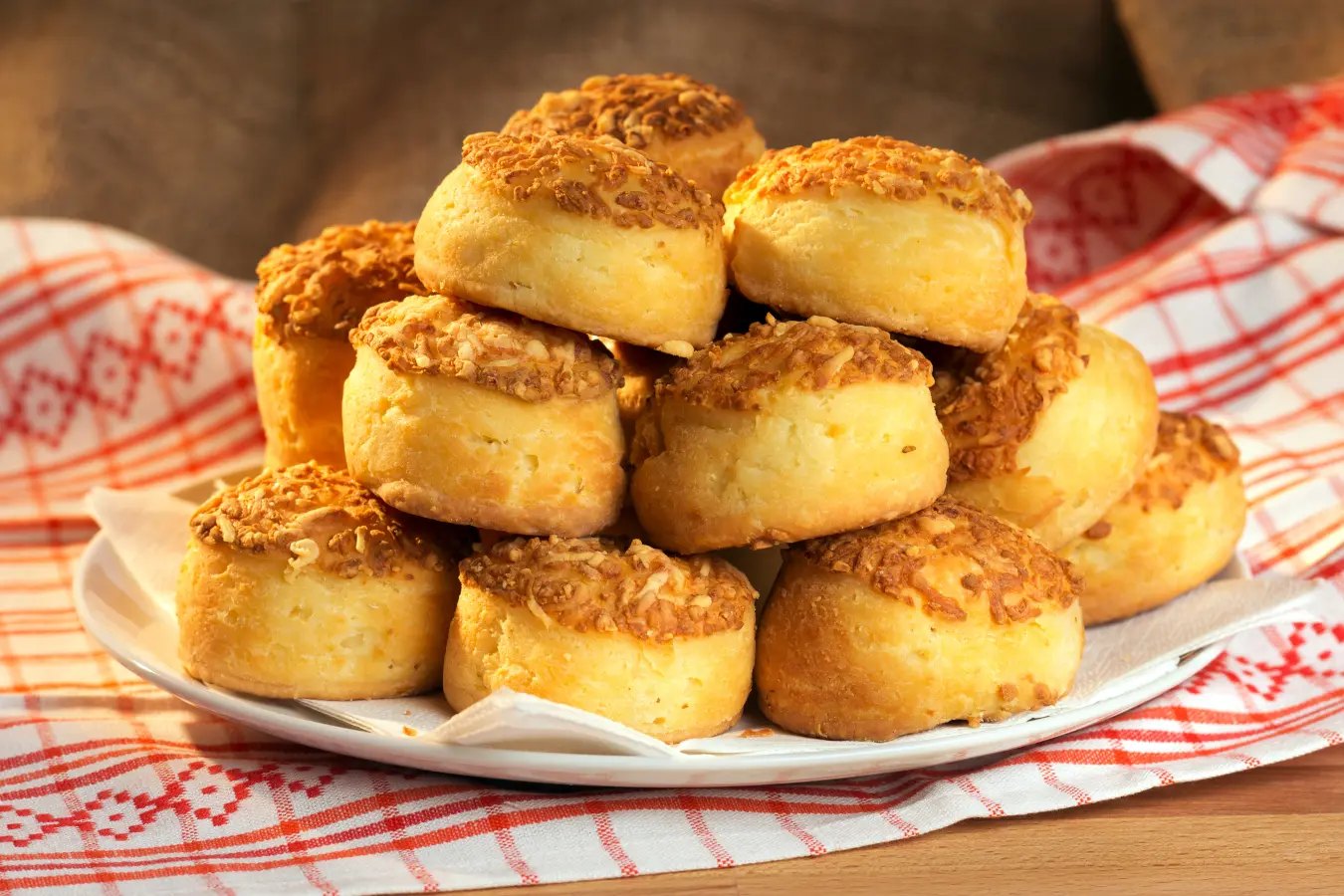
ID 22042139 ©Mdorottya | Dreamstime.com
Last but not least, no trip to Hungary is complete without trying pogácsa, a bite-sized pastry that pairs wonderfully with drinks.
What it includes:
Small, round savory scones made from a yeasted dough, often flavored with cheese, bacon, or potatoes.
Why it’s special:
Pogácsa is often served at gatherings and celebrations, making it both a casual snack and a festive treat.
Interesting fact:
With roots going back to medieval times, pogácsa remains one of Hungary’s most versatile and beloved baked goods.
Final Thoughts: Taste Hungary One Bite at a Time
From the fiery kick of halászlé to the comforting sweetness of kürtőskalács, Hungarian cuisine is a feast for the senses. What makes these dishes even more special is their connection to history, festivals, and everyday life.
Whether you’re sampling goulash at a rustic tavern, grabbing a lángos at a bustling market, or indulging in a slice of Dobos Torte in a café, each dish tells a story about Hungary’s culture and traditions.
If you’re planning a trip, make sure to try as many of these iconic Hungarian dishes as possible – you’ll leave with not just memories, but flavors that stay with you long after your journey ends.

More amazing articles for you:
Please visit:
Our Sponsor
